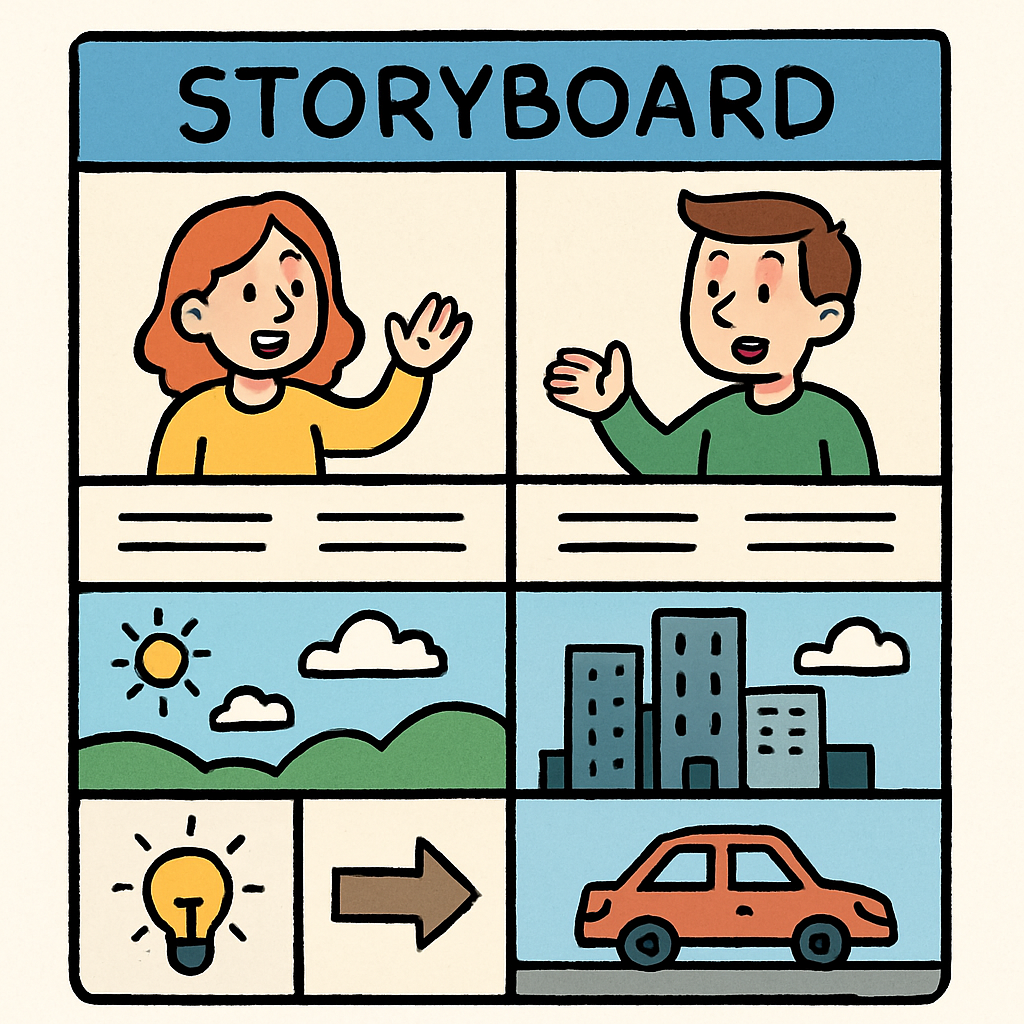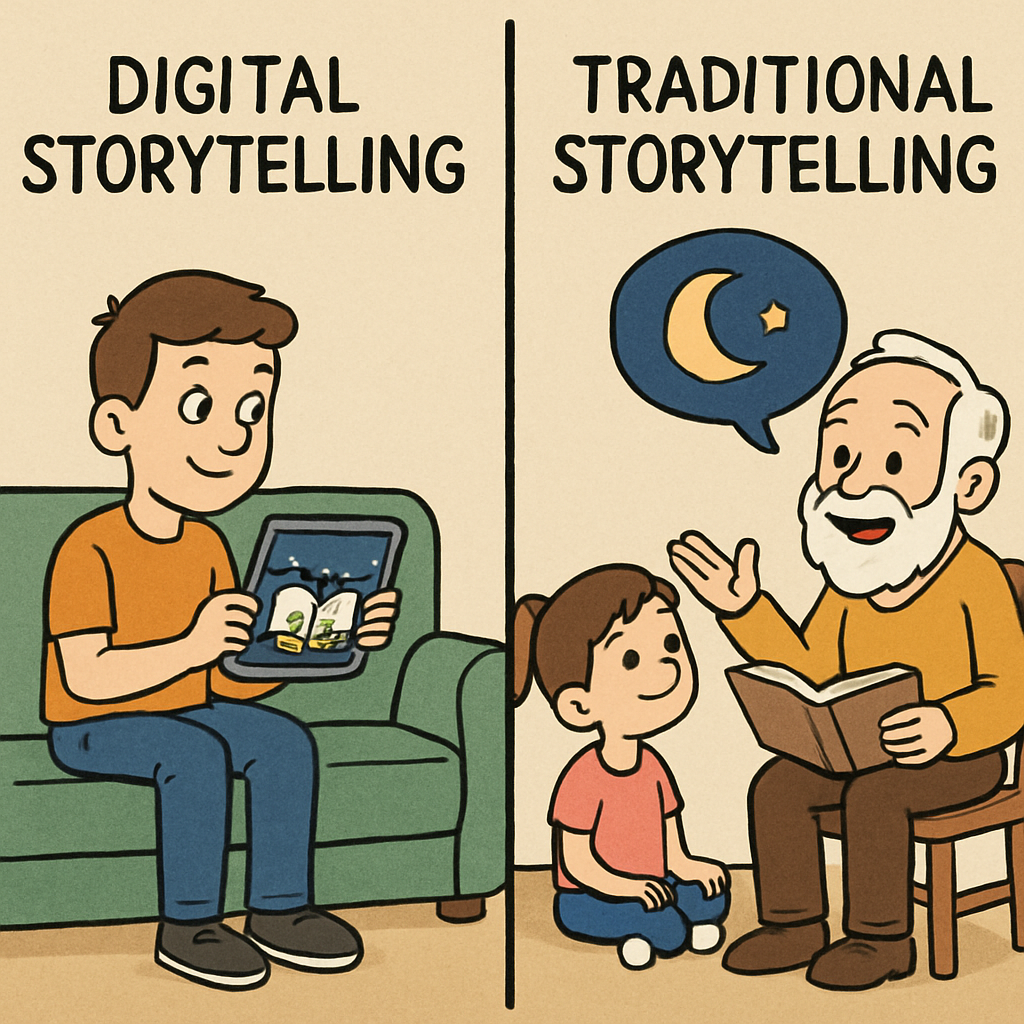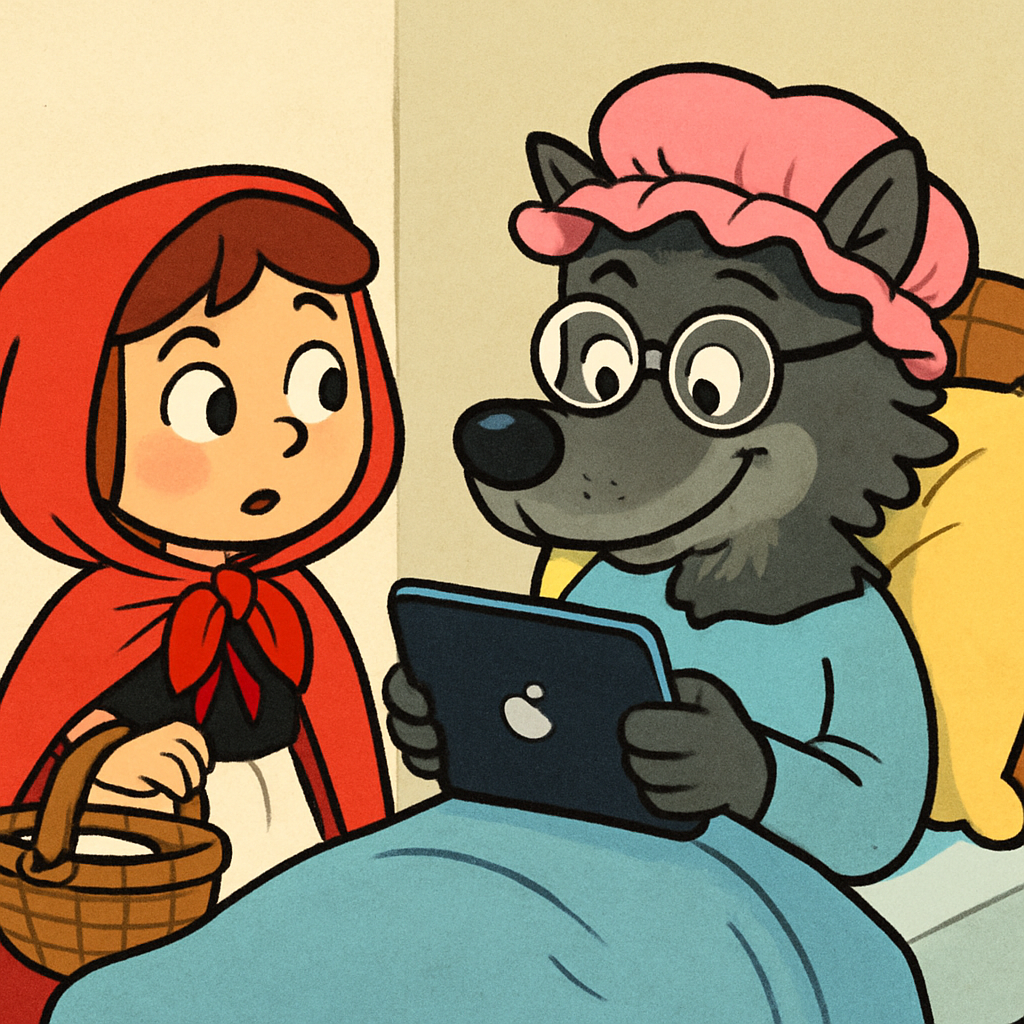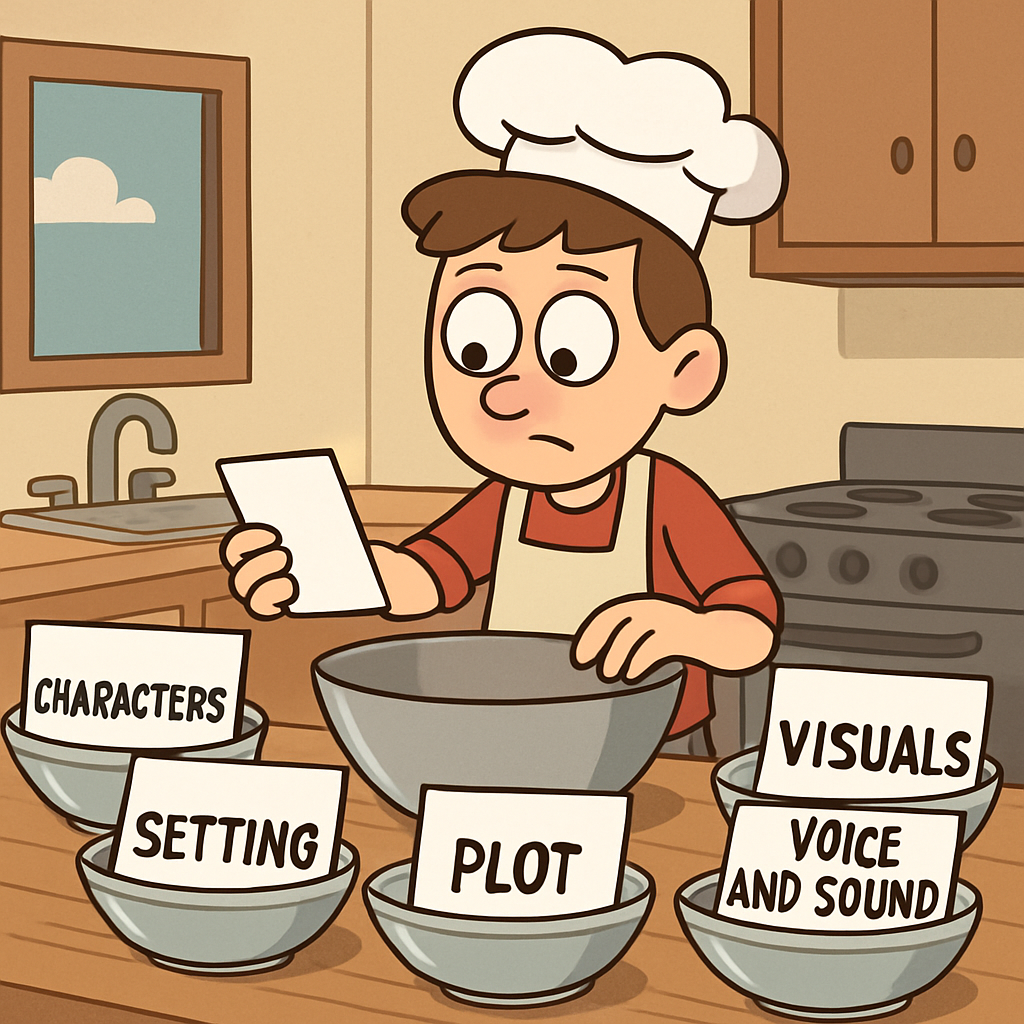 Imagine yourself seated around a campfire, listening to a friend recount a tale of a daring adventure. Your heart races, you laugh, and you eagerly anticipate the next part. Stories possess a unique magic, do they not? Now, consider how stories are brought to life on your phone or computer, enhanced by visuals, sounds, and effects that make them even more captivating.
Imagine yourself seated around a campfire, listening to a friend recount a tale of a daring adventure. Your heart races, you laugh, and you eagerly anticipate the next part. Stories possess a unique magic, do they not? Now, consider how stories are brought to life on your phone or computer, enhanced by visuals, sounds, and effects that make them even more captivating.
In this lesson, you will explore the world of digital storytelling. By the conclusion, you will understand how to craft stories that are engaging and effective on screen.
Stories have been a fundamental part of human communication for centuries, serving to entertain, educate, and connect people. In the digital age, they evolve into multimedia experiences that combine text, images, audio, and interactivity.
Digital storytelling allows creators to reach wider audiences through platforms like social media and websites, making narratives more accessible and immersive. As you progress through this lesson, think about how you might use these techniques in your own projects.
 Digital storytelling involves the use of digital technologies, such as computers, applications, and the internet, to create and share narratives in engaging and interactive formats. It builds upon traditional storytelling methods, such as those found in books or oral traditions passed down through generations, but enhances them with multimedia elements including images, videos, audio, and animations.
Digital storytelling involves the use of digital technologies, such as computers, applications, and the internet, to create and share narratives in engaging and interactive formats. It builds upon traditional storytelling methods, such as those found in books or oral traditions passed down through generations, but enhances them with multimedia elements including images, videos, audio, and animations.
In traditional storytelling, a narrative might be conveyed through spoken words, as when a grandparent recounts a fairy tale, or through written text in a book. These methods rely primarily on language and the listener's or reader's imagination. In contrast, digital storytelling incorporates additional layers to enrich the experience: for instance, you might view a dragon breathing fire in a video, listen to atmospheric music in a podcast, or navigate an interactive story on a website.
Digital storytelling is significant because it permeates various aspects of modern life. It appears on social media platforms, such as TikTok videos or Instagram Reels, which deliver concise narratives. In education, educators employ animated stories to illustrate historical events. Journalists utilise interactive articles featuring maps and videos to present news reports. Additionally, businesses leverage digital stories to promote products by sharing customer experiences.
Consider a short video on YouTube depicting a child's day at school. This could include humorous video clips, a voiceover providing narration, and uplifting background music. Such elements combine to form a compelling example of digital storytelling.
 In this step, you will conduct a quick comparison between traditional and digital storytelling methods. This activity will help you understand the differences and appreciate how digital elements can enhance narratives. Take a moment to think about each pair of examples below and reflect on their unique qualities.
In this step, you will conduct a quick comparison between traditional and digital storytelling methods. This activity will help you understand the differences and appreciate how digital elements can enhance narratives. Take a moment to think about each pair of examples below and reflect on their unique qualities.
Now, consider the following in your notebook:
 In this activity, you will compare a traditional written story with a digital version of the same narrative to understand the enhancements provided by digital elements. This exercise will help you appreciate how multimedia can transform storytelling.
In this activity, you will compare a traditional written story with a digital version of the same narrative to understand the enhancements provided by digital elements. This exercise will help you appreciate how multimedia can transform storytelling.
Consider the classic tale of Little Red Riding Hood: 'Once upon a time, there was a little girl who wore a red riding hood. She walked through the woods to visit her grandmother's house. Along the way, she met a cunning wolf who tricked her and arrived at the grandmother's house first...'
Now, envision a digital adaptation, such as a short animated video. This might include vivid visuals of Red Riding Hood skipping through a detailed forest, accompanied by ambient forest sounds and eerie wolf howls for audio effects, and dynamic pacing with quick scene transitions to build suspense. You can think of examples like animated fairy tale videos available on platforms such as YouTube.
If you are working in a group, discuss your answers with a partner. Share your observations and note any similarities or differences in your perspectives.
 To create an engaging digital story, it is essential to incorporate a balanced combination of key elements. In this section, we shall examine these elements in detail to understand how they contribute to a compelling narrative.
To create an engaging digital story, it is essential to incorporate a balanced combination of key elements. In this section, we shall examine these elements in detail to understand how they contribute to a compelling narrative.
The characters form the core of any story. They are the individuals or figures who drive the narrative forward. It is important to develop their personalities, such as portraying a brave hero or a quirky sidekick, and to make them relatable. This helps the audience to connect emotionally and care about what happens to them. For instance, consider a young explorer who overcomes fears; this can inspire viewers and make the story more memorable.
The setting establishes the location and time period of the story. It provides context and atmosphere. Utilise visuals, such as photographs or animations, to depict environments like a bustling city street or a mysterious forest. A well-defined setting immerses the audience and enhances the overall experience, making the story feel more real and vivid.
The plot is the sequence of events that unfolds in the story. It typically includes a beginning (where the scene is set and characters are introduced), a middle (featuring conflict or challenges), and an end (providing resolution). Maintain appropriate pacing to ensure the story is neither too slow, which might bore the audience, nor too rushed, which could confuse them. A well-structured plot keeps viewers engaged from start to finish.
Visual elements, including images, videos, or graphics, are crucial for bringing the story to life. They add depth and appeal, such as through colourful animations or authentic real-life footage. These components can convey emotions and details that words alone might not capture, thereby enriching the narrative and making it more dynamic.
Audio aspects, such as narration, dialogue, background music, or sound effects, play a vital role in setting the tone. A dramatic voiceover can build tension, while upbeat music can inject energy and excitement. Carefully selected sounds enhance the emotional impact and help to create an immersive auditory experience that complements the visuals.
Various digital tools are available to assemble these elements. For example, applications like Canva can be used for creating graphics, while simple video editing software allows you to combine visuals, audio, and narrative seamlessly. Experimenting with these tools enables you to produce polished digital stories efficiently.
Consider this example: a short animated video about a lost puppy finding its way home. It incorporates cute drawings of the puppy for visuals, transitions from sad to happy music for sound, and a narrative voiceover describing the adventure.